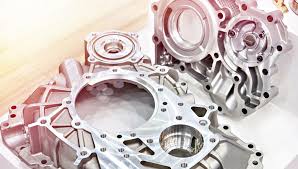Mobile:+86-311-808-126-83
Email:info@ydcastings.com
Understanding the Functionality and Design of Fountain Pump Impellers for Optimal Performance
Understanding Fountain Pump Impellers A Vital Component for Water Features
Fountain pumps are essential devices that bring life to water features in gardens, parks, and public spaces. At the heart of these pumps lies a crucial component known as the impeller. This article delves into the role, design, and maintenance of fountain pump impellers, highlighting their importance in ensuring efficient water flow and aesthetic appeal.
What is an Impeller?
An impeller is a rotating component of a pump that is responsible for moving water. It consists of a series of blades or vanes that help transfer energy from the motor to the fluid, creating a flow of water. In fountain pumps, impellers are designed to manage the specific dynamics required to elevate and circulate water, generating the mesmerizing displays associated with fountains.
Types of Fountain Pump Impellers
There are several types of impellers used in fountain pumps, each designed for different applications and flow rates. The most common types include
1. Open Impellers These are characterized by blades that are open on both sides. They are easy to manufacture and clean, making them an ideal choice for decorative fountains that might experience debris and algae growth.
2. Closed Impellers These have blades enclosed between two shrouds. Closed impellers are typically more efficient than open impellers and are often used in applications requiring higher pressure and consistent flow rates.
3. Semi-Open Impellers These are a hybrid design, combining elements of both open and closed impellers. They provide a balance between efficiency and ease of maintenance, suitable for a variety of fountain applications.
fountain pump impeller

Selecting the right type of impeller is critical as it directly affects the performance of the fountain pump and the aesthetics of the water feature.
The Role of Impellers in Fountain Design
In the context of fountain design, the impeller plays a pivotal role in determining the height and force of the water jets. The design of the impeller, including its diameter and the number of blades, influences how water is lifted and discharged. For instance, a larger impeller can move more water, creating higher jets, while a smaller impeller might be appropriate for more delicate sprays.
Furthermore, in decorative fountains, the pattern of water flow can be intricately shaped by the impeller’s design. Different impeller configurations can create diverse effects, from gentle misty sprays to robust, stream-like jets. This ability to manipulate water flow contributes significantly to the overall visual and auditory experience of a fountain.
Maintenance of Fountain Pump Impellers
To ensure the longevity and efficiency of fountain pumps, regular maintenance of the impeller is essential. Over time, impellers can become clogged with debris, which can lead to decreased performance or complete pump failure. Routine inspections should involve checking for any signs of wear and tear, cleaning the impeller, and ensuring that it spins freely.
In addition to cleaning, it's important to monitor the pump's performance. If you notice irregular water flow or strange noises emanating from the pump, it may indicate issues with the impeller or other pump components. Proactive maintenance can prevent costly repairs and extend the lifespan of the fountain pump.
Conclusion
The impeller is a fundamental element of fountain pumps, playing a critical role in the performance and visual appeal of water features. Understanding the various types and functions of impellers can help designers, landscapers, and homeowners make informed choices about their fountain installations. With proper selection and maintenance, fountain pump impellers can ensure that water features continue to enchant and inspire for years to come. Whether in a backyard oasis or a public park, these remarkable devices bring beauty and tranquility to our surroundings, reminding us of the soothing power of water.
-
Why Should You Invest in Superior Pump Castings for Your Equipment?NewsJun.09,2025
-
Unlock Performance Potential with Stainless Impellers and Aluminum End CapsNewsJun.09,2025
-
Revolutionize Your Machinery with Superior Cast Iron and Aluminum ComponentsNewsJun.09,2025
-
Revolutionize Fluid Dynamics with Premium Pump ComponentsNewsJun.09,2025
-
Optimizing Industrial Systems with Essential Valve ComponentsNewsJun.09,2025
-
Elevate Grid Efficiency with High-Precision Power CastingsNewsJun.09,2025











